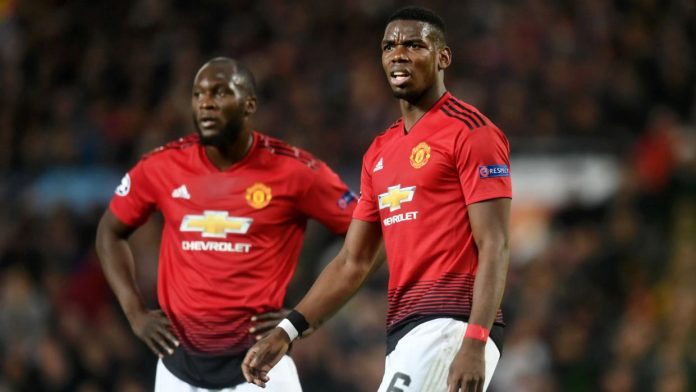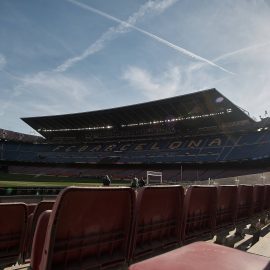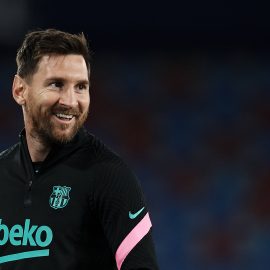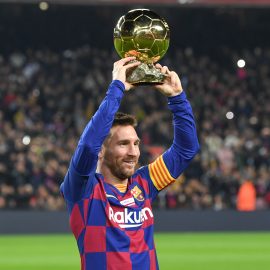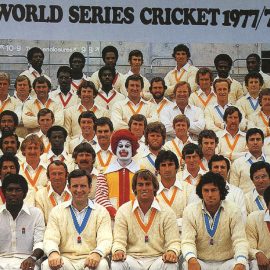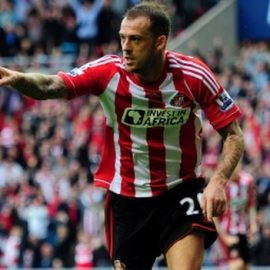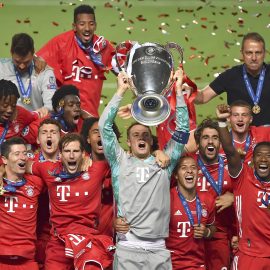Very few teams can win without great players in the midfield. MIDFIELDERS have to cover a lot of ground, they have to win and hold the ball, they must complete passes, and they have to be adept at both ends of the field. Sometimes, they’ll be asked to take on leadership roles, barking out commands while cajoling teammates to work hard. Or they might be asked to turn the match on its head by providing one moment of brilliance, either with a perfectly placed free kick, a gorgeous cross or through-ball that sets up a teammate for a goal, or a crushing tackle in midfield to cut out a counter-attack.
Simply put, midfielders have to do it all, and these legends were the very best of their brethren.
You’ll note that I didn’t include any defensive midfielders. The defensive midfielder role is a relatively new phenomenon in modern football, and while Roy Keane or Claude Makelele might, one day, be considered legends on par with the players listed below, I couldn’t justify putting one or both of them on the list ahead of someone like Zidane. If anyone disagrees feel free to vent in the comments section below, but please keep it clean. And please don’t say that I’m biased against defensive midfielders. Once again, this is an informative feature, based on what the consensus is when it comes to what players are considered to be legends.
.
.
.
Stanley Matthews |
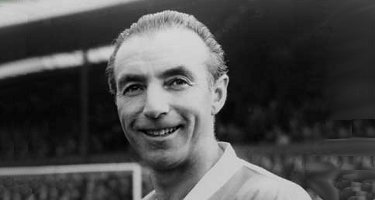 |
|
| ENGLAND | ||
| 1932-1965 | ||
| Stoke City (1932-1947, 1961-1965) Blackpool (1947-1961) |
||
.
Known as “The Wizard of the Dribble,” Matthews was, obviously, a fantastic dribbler, especially from the right wing, which was where he played for most of his career. He was teetotaler who was known for his fantastic fitness, traits that allowed him to play for over 30 years. At 50 years old, he was the oldest player to ever play in England’s top division.
Matthews used his dribbling skills to set up teammates, to score goals, to keep possession, and to kill time if his team was ahead in the closing minutes of a match. The F.A. Cup Finals of 1953 was dubbed “The Matthews Final” as a result of his overall brilliance. During that match, his Blackpool squad were trailing, 3-1, when he assisted on two goals (including the match-winner), both coming from long crosses from the right-wing. In addition to that famous victory, Matthews won the inaugural Professional Football Writers’ Association Player of the Year award in 1948 and 1963, and won the Ballon d’Or in 1956.
As a result of war, Matthews only made 54 appearances for England, despite playing for the team from 1934-1957. He played for England in the 1950 and 1954 World Cups, and had already retired from the game by the time England won their World Cup. Despite that, Matthews continued to be an important part of the national team, even as he reached his 40’s. In 1955, he set up five goals as England defeated Scotland in a match that saw the debut of the man that many people expected to be the next great winger in English football, Duncan Edwards.
Matthews died in 2000, but his legend has only grown in the intervening years. In 2002, he was the first inductee into the English Football Hall of Fame, and his birthday is unofficially a national holiday, as people are encouraged to come to work wearing football shirts. I’m sure most workers would rather have the day off, but it’s nice tribute to the English legend who defied the laws of aging and seemingly defied the laws of physics with his dribbling.
Stanley Matthews VIDEO:
.
.
.
Bobby Charlton |
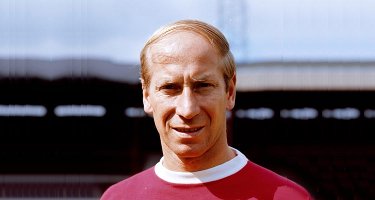 |
|
| ENGLAND | ||
| 1953-1975 | ||
| Manchester United (1953-1973) Preston North End (1973-1974) Waterford United (1975) |
||
.
One of the true legends of the game, Sir Bobby Charlton has been blessed with good fortune for his entire life. One of the only players who survived the Munich Air Disaster, Charlton carried the torch for his fallen comrades while providing a bridge to the new group of United players that took the team to success in the mid-60’s.
Charlton was known for his ferocious long-range shot and attacking skills in midfield, and his 249 goals for United remain a club record. He held the record for most club appearances until last season, when Ryan Giggs surpassed him. He was also the most-capped player for England at the time of his retirement, earning 106 caps for his country, and his goalscoring record for England still stands at 49 goals.
Charlton was a winner who experienced tremendous success on the pitch. He won League titles in 1957, 1965, and 1967, and an F.A. Cup title in 1963. He also captained United to its European Cup victory in 1968, and won both the Football Writers’ Association Footballer of the Year award and the Ballon d’Or in 1966.
He was a vital part of the English National Team, and scored both English goals in a 2-1 victory over Eusebio and the Portuguese team in the 1966 Semi-Finals. So dangerous was he, that, in the Finals, West Germany assigned their talismanic sweeper, Franz Beckenbauer, to mark him. Beckenbauer did the job, however Charlton showed his defensive skills and neutralized “Der Kaiser” on the other side of the ball.
Charlton has continued his service to the game, even in retirement. As Manchester United’s goodwill ambassador, his stature within the club has only increased with time. He has also served as an ambassador for English football, helping to promote England’s bids for the 2006 World Cup and the 2012 Olympics.
Bobby Charlton’s life was not snuffed out on that fateful day in Munich, and he has made the most of his second chance, continuing to contribute to the game while commemorating his fallen teammates.
Bobby Charlton VIDEO:
.
.
.
George Best |
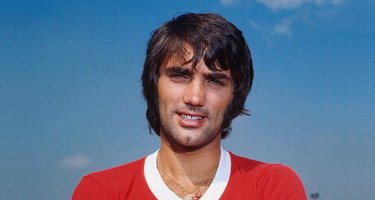 |
|
| N. IRELAND |  |
|
| 1963-1984 | ||
| Manchester United (1963-1974) Dunstable Town (loan, 1974) Stockport County (1975) Cork Celtic (1975-1976) Los Angeles Aztecs (1976, 1977-1978, 1978-1979) Fulham (1976-1977) Fort Lauderdale Strikers (1978-1979) Hibernian (1979-1980) San Jose Earthquakes (1980-1981) Bournemouth (1983) Brisbane Lions (1983) Tobermore United (1984) |
||
.
With a name like “Best” you had better be able to live up it. George Best did so, and more, during his long career. He was one of the greatest wingers of all time, as his fleet-footed pace and acceleration allowed him to blow by defenders, while his trickery with the ball won him fans and admirers all throughout the world. He was a deadly goal-scorer, putting up an astonishing 138 goals in 361 appearances for Manchester United, and finishing with 204 in his career for both club and country.
His best years were at Old Trafford, where he was surrounded by talented players such as Bobby Charlton and Denis Law. It could have been an even more impressive array of players, as the Munich Air Disaster had occurred five years before Best debuted with the senior team. Best was seen as the replacement for the gifted Duncan Edwards, who had perished in the crash, and Best soon set about making his own legend at Old Trafford. He won two League titles in 1966 and 1967, and in 1968, he had a dream season, winning a European Cup title and being voted European Player of the Year and Football Writers’ Association Footballer of the Year. In the semi-finals of the European Cup that year, United were in danger of going out against Real Madrid, but Best sent a brilliant side-pass to Bill Foulkes after seeing Real Madrid’s defense and realizing that a conventional cross into the box would have been cut out. Foulkes then scored the goal that put United in the Finals, where Best scored the Cup clinching goal against a Benfica team that was led by Portuguese legend, Eusebio.
Despite his brilliance on the pitch, he was never able to lead Northern Ireland to the World Cup. That didn’t diminish his stature in his home country. Neither did his rapid physical decline as a result of decades of hard-living that turned him into a tabloid laughing stock later in his life. In Northern Ireland, they have a saying there that goes: “Maradona: Good. Pele: Better. George Best.” That about sums it up.
George Best VIDEO:
.
.
.
Johan Cruijff |
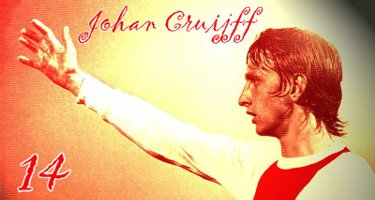 |
|
| NETHERLANDS |  |
|
| 1964-1984 | ||
| Ajax (1964-1973, 1981-1983) Barcelona (1973-1978) Los Angeles Aztecs (1979-1980) Washington Diplomats (1980-1981) Levante (1981) Feyenoord (1983-1984) |
||
.
Known as “Pythagoras in Boots” because of his mastery of passing angles, Cruijff was instrumental to the Dutch philosophy of “Total Football.” As such, Cruijff’s position can be difficult to ascertain, since he could score, pass, and defend, and moved all over the pitch, depending on where he was needed. However, his passing and scoring skills made him most effective as an attacking midfielder.
He was a great scorer, as evidenced by his 267 goals in 366 appearance for Ajax. In all, he scored over 400 goals during his career for club and country. As mentioned earlier, he was a tremendous passer, able to see the field unlike most of his peers and deliver accurate passes from anywhere on the pitch. He could dazzle too, as he perfected the “Cruijff Turn” in which he faked a pass or cross, forcing a defender to commit to it, only to drag the ball behind his planted foot and turning away from the flat-footed defender.
At Ajax, he was the leader of one of the greatest teams of all time. He won the treble in 1972, and nearly repeated the task the following season. In all, he won eight Eredivisie titles, five KNVB Cups, and three consecutive European Cups from 1971-1973. He added a Liga title while with Barcelona to his trophy cabinet, and won a Eredivisie title with Feyenoord. He also racked up the individual honors, taking home the Ballon d’Or in 1971, 1973, and 1974.
Despite playing on some extremely talented international teams, Cruijff was never able to win the World Cup. Their best chance to win came in 1974, when Cruijff (who won the Golden Ball that year as the Best Player in the World Cup) led the Netherlands to the World Cup Final against West Germany. The Dutch had sailed through their previous matches, with Cruijff scoring three goals. He set up the opening goal against West Germany in the Finals, drawing a foul inside the box that resulted in a penalty during the 2nd minute of the match. West Germany, however, did a great job man-marking Cryuff, shutting him down with the likes of Franz Beckenbauer, Berti Vogts, and others.
After retiring, Cruijff became a successful manager, winning two KNVB Cups and a Cup Winners’ Cup with Ajax and four consecutive La Liga crowns while with Barcelona. Despite his often stormy relationship with Ajax (he left for bitter rivals, Feyenoord after a salary dispute and was supposed to join the club as technical director until it fell through at the last minute), he remains a club icon whose number 14 jersey was retired.
Johan Cruijff VIDEO:
.
.
.
Rivelino |
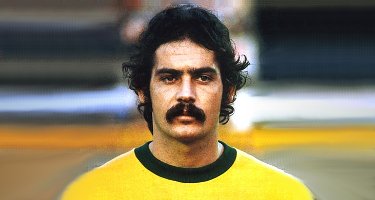 |
|
| BRAZIL |  |
|
| 1965-1981 | ||
| Corinthians (1965-1974) Fluminense (1974-1978) Al-Hilal (1978-1981) |
||
.
When you’re considered to be the fourth greatest player in Brazilian history after Pele, Zico, and Garrincha, that’s about as great an accomplishment as there is. Rivelino was lauded for his grace on the pitch, as well as his dazzling array of moves, which included his patented “Elastico,” in which he faked going right while keeping control of the ball and then spinning it to his left. This move has become a staple in modern football, popularized by the likes of Ronaldinho, Cristiano Ronaldo, Zlatan Ibrahimovic, Zidane, and others.
Rivelino, who perfected his tricks by playing futsal in Sao Paulo, was more than just a playground player. He had excellent passing skills, a sharp mind, excellent dribbling skills, and a thunderous left footed shot. He was also a tremendous free-kick taker, famous for his “banana-bending” kicks. He scored a famous goal against the Czechs during the 1970 World Cup that was nicknamed “The Atomic Kick.” He was an important part of the aforementioned 1970 World Cup squad, which is widely regarded as one of the greatest teams of all time. He played in two subsequent World Cups and ended his international career with 92 appearances and 26 goals.
He was also a quick thinker, and one example of this was when he saw the opposing teams goalkeeper finishing up his pre-match prayer right as the whistle blew to begin the game. Rivelino took the kickoff and booted a long-range shot that beat the startled goalkeeper for what is considered to be the fastest goal in football history.
Well, you don’t become one of the greatest Brazilians of all time by being stupid. Actually, that’s not entirely true, as we’ll find out with Garrincha. Still, Rivelino carved out an excellent reputation for himself, despite playing in the shadows of Pele and Zico.
Rivelino VIDEO:
.
.
.
Zico |
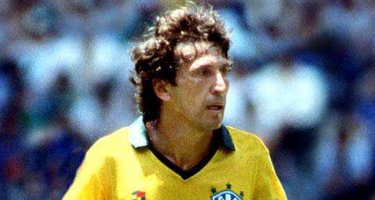 |
|
| BRAZIL |  |
|
| 1971-1994 | ||
| Flamengo (1971-1983 1985-1989) Udinese (1983-1985) Sumitomo Metals (1991-1992) Kashima Antlers (1992-1994) |
||
.
Often referred to as the “White Pele,” some soccer experts have made the case that Zico may have been better than his more celebrated countryman. Pele didn’t agree, but he did praise his fellow Brazilian, saying that, out of all the great players throughout the years, Zico was the one who came closest to him.
Widely considered one of the greatest dribblers in football history, he was also a powerful finisher. He was, perhaps, best known for his ability to bend and curve his brilliant free kicks. However, he wasn’t just a great scorer. He had excellent playmaking skills and was known for his fantastic vision and precise passing.
Perhaps his reputation suffers a bit as a result of failing to win a World Cup, despite going to three consecutive World Cups from 1978-1986. He did his part in the competition, scoring 5 goals in 3 World Cups, however, he came up short, especially in 1982 when a talented Brazilian squad just missed qualifying for the knock-out phase after losing to eventual-champions Italy.
At the club level, most of his success was at Flamengo, where he remains the club’s all-time leading scorer with 508 goals. He won seven Rio State Championships and four Brazilian Professional Championships with Flamengo and added a Japanese title to his collection after heading to the Sumitomo in the early 90’s. Zico remains active in coaching circles, leading Japan to the 2006 World Cup and managing Fenerbache, FC Bunyodkor in Uzbekistan, and CSKA Moscow. Today, he’s regarded as a brilliant and skillful player whose legend has only grown with time.
Zico VIDEO:
.
.
.
Michel Platini |
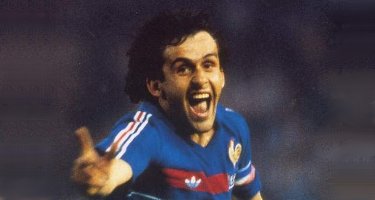 |
|
| FRANCE |  |
|
| 1972-1987 | ||
| AS Nancy (1972-1979) Saint-Etienne (1979-1982) Juventus (1982-1987) |
||
.
One of the greatest French legends and icons of all time, Platini captained his team 49 times and presided over a golden era in French football. He combined with fellow midfielders Alain Giresse, Luis Fernández and Jean Tigana to make up the “carré magique” (Magic Square), where his outstanding playmaking skills and his expertise at free kicks made him the talismanic figure on the French national team. His 41 international goals were a French record until 2008, when Thierry Henry surpassed it.
Platini led France to the 1984 European Championship, winning the title with one of the greatest teams ever assembled. He scored a record 9 goals in the tournament, and scored two “perfect hat tricks” (he scored with both feet and his head – as opposed to an imperfect hat trick, where a hand is usually prominently involved) in the group stage against Belgium and Yugoslavia. He went to three World Cups, losing in the 1982 and 1986 Semifinals.
Platini won one French League title while with Saint-Etienne, but almost all of his domestic success came with Juventus. He won two Serie A titles and one Coppa Italia. He also won the 1985 European Cup and the 1984 Cup Winners’ Cup. He was the top scorer in Serie A for three consecutive seasons (1982-1985) and won three straight Ballon d’Ors from 1983-1985.
Since his retirement, Platini has continued to be active in European football. He managed France in the 1992 European Championships and was the head of the 1998 World Cup Organizing Committee. He currently serves as President of UEFA, where he has generated controversy for his support for a FIFA plan to limit each club to 5 foreign players in the starting lineup. It’s possible that his post-career activities could influence the game far more than anything he did on the pitch as a player. That would be saying something.
Michel Platini VIDEO:
.
.
.
Diego Armando Maradona |
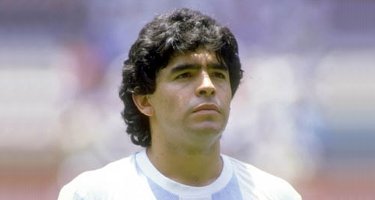 |
|
| ARGENTINA | ||
| 1976-1997 | ||
| Argentinos Juniors (1976-1981) Boca Juniors (1981-1982, 1995-1997) Barcelona (1982-1984) Napoli (1984-1991) Sevilla (1992-1993) Newell’s Old Boys (1993) |
||
.
It’s hard to argue with his on-the-field accomplishments. Most people consider him the best player ever to play the game not named Pele. In fact, some consider him to be have been better than Pele (he won FIFA’s Internet vote over Pele as “Player of the Century”). His position on the field can be difficult to categorize as he scored like a striker, but spent a lot of time in midfield creating chances for his teammates. More often than not, he lined up in midfield, but his skills were so complete that he would be all over the field. His skills were second-to-none, and his playing style has influenced generations of imitators. Much like how many talented basketball players have been labeled “the next Jordan,” many dynamic Argentine footballers have been tagged with the “next Maradona” label. Some (like Messi) have thrived, but most have failed to live up to the expectations.
It’s unfair to judge players by Maradona’s standards, because he was in a world of his own. It’s strange, considering his compact (and some would say, stocky) frame that he could be such a dominant player. However, his legs were extremely strong and capable of withstanding punishment. Plus, he had remarkable dribbling skills, which allowed him to go at full speed towards an opponent’s goal where he could either fire a deadly shot on goal or whip an accurate cross towards one of his teammates. As evidenced by his brilliant goal against England in the World Cup (the one where he didn’t use his hand), he was capable of galloping past defenders at full speed, with the ball seemingly stuck on his foot. He could pull out the tricks, as well, popularizing the Rabona technique, and was also a deadly free kicker.
On the field, he had some success at the club level, where he won an Argentine League title with Boca Juniors in 1981 and then won the double with Barcelona in 1983, winning La Liga and the Copa del Rey. However, it was at Napoli where he became an icon. Moving from Barcelona for a then record £6.9 million, he presided over Napoli’s greatest era, winning the only two Scudetti in club history and guiding the team to a UEFA Cup title in 1988-1989. He remains the most beloved player in Napoli’s history, his popularity so great that when Argentina came to Italy for the 1990 World Cup, Napoli was the only city in Italy where the Argentine national anthem was not booed.
On the international level was where he affirmed his legendary status, as he led Argentina to the World Cup in 1986, during which time he scored two famous (or infamous — depending on your point of view) goals against England. His second goal was named “Goal of the Century” by FIFA, and it’s hard to come up with a better one.
He was a legend in every sense of the word, and his impact on the game is absolutely immeasurable. His problems off the field were well documented. He was suspended for 15 months in 1991 for testing positive for cocaine. He was famously tossed out of the 1994 World Cup after failing a doping test. His life has been one gigantic tabloid nightmare ever since leaving the game and his health has been so carefully scrutinized that you would think he was the President or the Pope.
Nevertheless, even if you accept that he was a controversial figure who hindered his career more than he helped it, you still can’t argue with his results. Simply put, he was one of the very best players of all time.
Diego Maradona VIDEO:
.
.
.
Gheorghe Hagi |
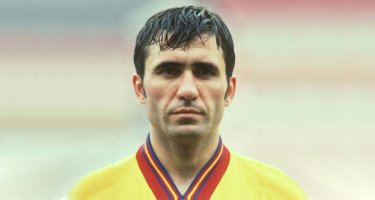 |
|
| ROMANIA |  |
|
| 1982-2001 | ||
| Farul Constanţa (1982-1983) Sportul Studenţesc (1983-1987) Steaua Bucureşti (1987-1990) Real Madrid (1990-1992) Brescia Calcio (1992-1994) FC Barcelona (1994-1996) Galatasaray (1996-2001) |
||
.
Known as “the Maradona of the Carpathians,” Hagi is widely considered to be the greatest player in Romanian history. He was known as an excellent passer and playmaker in the midfield, and his prowess from long-range made him a threat to score every time he came down the pitch. He scored 237 goals in 513 games in his club career, and contributed 35 goals in 125 international matches. He is the second-most capped player for Romania, and remains the country’s all-time leading scorer.
Hagi won three consecutive domestic doubles with Steaua BucureÅŸti from 1987-1989, and lost in the 1989 UEFA Cup Final. He is one of the few players to have played with both Barcelona and Real Madrid, although he failed to win any silverware. His most successful club stint came with Galatasaray, where he won four consecutive Turkish League titles, won two consecutive Turkish Cups, and won the 2000 UEFA Cup. Due to his success, he is also considered a hero in Turkey.
Internationally, his shining moment came at the 1994 World Cup where he led Romania to the Quarterfinals, its best ever showing. He scored three goals, including a memorable 40-yard goal against Colombia, and was named to the Team of the Tournament. He played for Romania in the 1998 World Cup and in Euro 2000 before retiring from international competition.
Gheorghe Hagi VIDEO:
.
.
.
Zinedine Zidane |
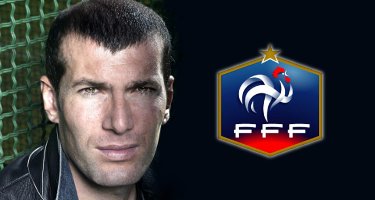 |
|
| FRANCE |  |
|
| 1988-2006 | ||
| AS Cannes (1988-1992) Bordeaux (1992-1996) Juventus (1996-2001) Real Madrid (2001-2006) |
||
.
When people ask me who the greatest player of the last 10 years was, I say, without any hesitation at all, Zinedine Zidane. Of course, people then come back with “Oh, the guy who committed the headbutt in the World Cup Final?” Yeah, Zidane was a hothead, and he ended his career on the worst possible note imaginable. However, it doesn’t diminish his brilliance, nor does it detract from his accomplishments.
Zidane was, arguably, the best playmaking international midfielder since Maradona. He was the heartbeat of the French National Team that dominated from 1998-2000, winning both the World Cup and the European Championship. If there were any doubt about how important he was to his country, look no further than the 2002 World Cup, where an injured Zidane watched the first two French matches from the bench and hobbled onto the field for the third and was unable to prevent France from being eliminated without scoring a single goal. Additionally, France’s struggles in qualifying for the 2006 World Cup without Zidane, and their poor display at Euro 2008 only underscored how reliant the team had become on his brilliant playmaking.
He wasn’t just a playmaker, though, and he was more than capable of putting the ball in the net on his own. He was a great free-kicker and was one of the best headers in the game. He had exquisite ball control skills and was great at keeping possession of the ball, especially when going forward. He had a ferocious shot, and he could finish from long-range or up close.
On the club level, Zidane was just as great as he was on the international scene. He won two Scudetti with Juventus and he won the Champions League and La Liga with Real Madrid. Additionally, he won the Ballon d’Or in 1998 and was a three-time FIFA World Player of the Year. With Kaka’s proposed transfer to Manchester City falling through the cracks, Zidane remains the most expensive player of all time, transferring to Real Madrid from Juventus for £46 million.
His temper, obviously, cost him dearly, and his sending off in the World Cup Final was hardly the first time he saw red during his career (both literally and figuratively). He was sent off 14 times during his career, including an ugly incident in the 1998 World Cup where he stomped on a Saudi Arabian player’s chest. His two-match ban got him back in time for the Quarter Finals, though, but it cost him a chance at the Golden Ball. Plus, there was the embarrassing scene in 2006, where he finally did win the Golden Ball, but was sent off in the World Cup Final after headbutting Marco Materazzi. Still, just because he didn’t have a fairy tale ending, it doesn’t make him any less of a legend.
Zinedine Zidane VIDEO:
.
.
.
Text & Career Summaries by Victor Li. Formatting and Image Research by Marco Pantanella.
Back to Football Legends homepage.
Add Sportslens to your Google News Feed!
